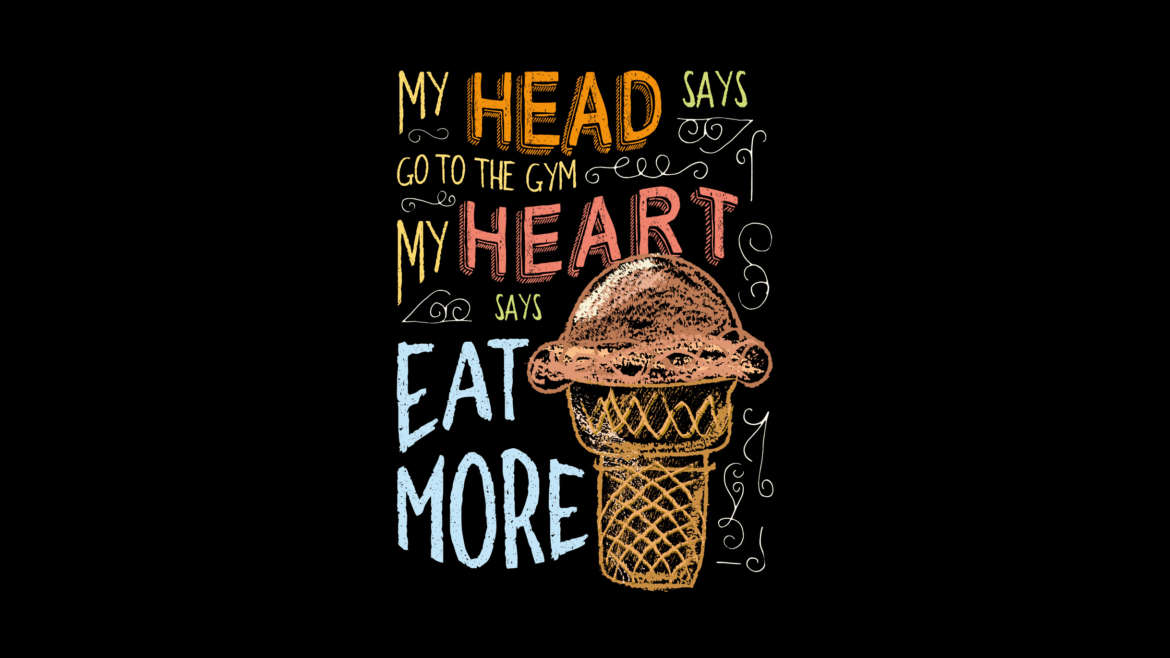Fostering the mind-body connection
I’ve long been interested in how our responses to stress affect our brains and our hearts. I’m continuing my campaign for Go Red For Women with the American Heart Association to support heart health and awareness. Did you know the heart sends more notifications to the brain than the brain sends to the heart? And true to metaphor, the heart is especially important when it involves emotional processing. Finding a way to allow the heart and mind to work together most effectively is the key to heart-brain health.
Science behind the heart-brain connection
Research shows that different heart activity patterns have specific effects on emotional and cognitive function. Specifically, the data shows intense stress directly affects your cognitive abilities.
When you are particularly stressed, the heart’s rhythm will be more erratic. This irregular, erratic beating causes the neural signals moving from your heart to your brain to obstruct your higher cognitive functions. This is why we suffer from foggy thinking, poor memory and concentration when we’re under stress.
The way your heart signals your brain during period of high stress also intensifies the emotional effect on your brain.
On the flip side, positive emotions send powerful messages of support from your heart to your brain that encourage cognitive and emotional functioning. It’s empowering to realize we can take steps that will have such a positive impact on our health.
Heart rate variability: a major indicator of health and fitness
It’s important to understand that even healthy hearts beat at a somewhat irregular rates. While at rest, your heart beats at various intervals, known as heart rate variability, or HRV.
Your HRV is a major indicator of your fitness and health, especially as we age. It reveals the body’s ability to flexibly adjust to stressful experiences and emotions. A healthy heart will be able to adjust to each new situation and feeling without being thrown off too much from its major patterns and rhythms.
As we move forward in life, the range of variation in your resting heart rate decreases. An abnormally low HRV is connected to a higher risk of health problems and premature mortality.
To bring a low HRV back to a healthy level, you can decrease stress-produced wear and tear on your nervous system and support your body’s natural regenerative processes.
Strengthening the heart-brain connection
To strengthen your heart-brain connection, start with practicing intentional positive emotions. For example, be in the moment and highly aware of what your body feels like when caring for someone. Note how your breath and heart move in a more synchronized rhythm. And as I mentioned earlier, this rhythm directly impacts the brain.
Practicing positive emotions and their impact on the heart empowers you to live in a higher emotional and physical state. When you are able to produce prolonged positive emotions, it’s called coherence. This coherence creates improved harmony and order in your body and mind.
Coherence versus relaxation
The body’s HRV responds differently to relaxation and coherence. Relaxation reduces the autonomic outflow, thereby creating a lower HRV. Relaxation also causes positive change to the autonomic nervous system balance, increasing the body’s parasympathetic activity.
Coherence also causes an increase in the parasympathetic activity. But coherence fluctuates at a natural resonant frequency. This brings more harmony and synchronization to your body’s nervous system – and improves the heart-brain communication.
The importance of breathing
Breathing plays a role in both relaxation and coherence. Learning to use breathing patterns to control your heart’s rhythm is a powerful tool. To begin, breathe regularly and slowly, using a 10-second rhythm. Breathe in for five seconds, then breathe out for five seconds.
By breathing rhythmically at this pace, you’ll encourage a shift away from a stressful emotional state and into increased coherence. This type of breathing can demand real mental effort. Many people struggle to maintain it, but like all worthwhile goals, the benefits to your health will be worth it. Continue practicing, so your body remembers this new response to stress.
Although breathing technique is important, don’t forget it’s not the main way to strengthen the heart and mind connection. The key for coherence is to intentionally produce a heartfelt positive emotional state.
Experiencing positive emotions allows you to biologically control the heart’s rhythms, without having to breathe your way into it. The rhythm of your heart impacts your breathing rate and patterns. When your heart’s rhythm becomes coherent after positive emotions, your breathing rhythm automatically changes with it.
Breathing through your heart for coherence
The simple 10-second breathing rhythm is the perfect way to train your body toward coherence. Once you feel you are beginning to master this practice, start focusing your breathing on a positive experience or feeling, but breathe it through your heart area. If you practice the technique often enough, you’ll be able to shift yourself into coherence by activating a positive feeling.
As science uncovers the mysteries of how our physical, cognitive, and emotional systems relate, we now know the heart is more than simply an organ pumping blood through our bodies. Together with the brain, it’s a crucial part of our emotional and cognitive being.
Fortunately, we can strengthen the signals from our heart to our brain, using breathing and intentional positive emotions. One of my favorite tools to create a stronger heart-brain connection is this heart math app, which helps me find my inner balance and coherence. Let me know how you like it!



